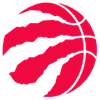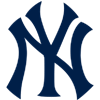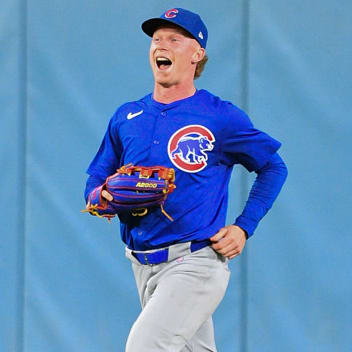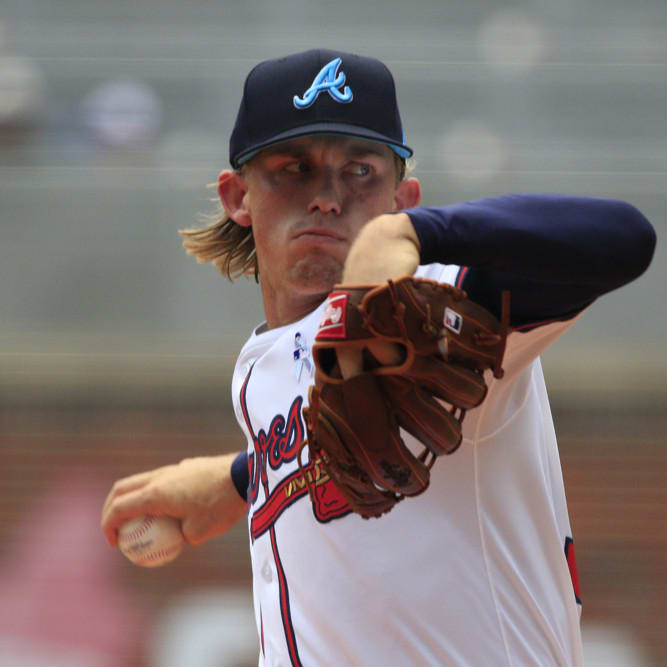Mound Musings is all about interaction. I appreciate the questions, and discussing whether this guy or that guy is the best pitcher to have on a roster. It's all about making fantasy progress. That said, over the past couple of years, Life, the Universe and Everything, has gradually become a semi-regular part of Mound Musings.
As we try to answer the ultimate question, I'll occasionally dedicate this space to elaborating on questions from you, the readers. I just experienced what I consider something of a revelation regarding the different game of today, and I'm calling it "Fielding Follies" going forward. For this edition, I'll begin with that, and follow it up with some general thoughts about pitching, scouting and the state of the game.
So, without further ado, let's go:
Fielding Follies: When evaluating a pitcher, I have long given a little extra credit to those lucky enough to have excellent fielders playing behind them – in particular, good fielders up the middle at shortstop, second base and/or centerfield. Conversely, I would downgrade pitchers who had poor fielders manning those positions. For the majority, this was a neutral factor; it being neither a positive nor a negative. That's not really the case these days. In the baseball world of the Boring '20s, offense, or at least potential offense, is all that matters. Teams are now routinely stationing players anywhere and everywhere on the field, and whether they can catch or throw is irrelevant.
Maybe it's because their follies are more
Mound Musings is all about interaction. I appreciate the questions, and discussing whether this guy or that guy is the best pitcher to have on a roster. It's all about making fantasy progress. That said, over the past couple of years, Life, the Universe and Everything, has gradually become a semi-regular part of Mound Musings.
As we try to answer the ultimate question, I'll occasionally dedicate this space to elaborating on questions from you, the readers. I just experienced what I consider something of a revelation regarding the different game of today, and I'm calling it "Fielding Follies" going forward. For this edition, I'll begin with that, and follow it up with some general thoughts about pitching, scouting and the state of the game.
So, without further ado, let's go:
Fielding Follies: When evaluating a pitcher, I have long given a little extra credit to those lucky enough to have excellent fielders playing behind them – in particular, good fielders up the middle at shortstop, second base and/or centerfield. Conversely, I would downgrade pitchers who had poor fielders manning those positions. For the majority, this was a neutral factor; it being neither a positive nor a negative. That's not really the case these days. In the baseball world of the Boring '20s, offense, or at least potential offense, is all that matters. Teams are now routinely stationing players anywhere and everywhere on the field, and whether they can catch or throw is irrelevant.
Maybe it's because their follies are more noticeable, corner outfielders are becoming more and more frustrating, and inconsistent scoring makes it worse. Often, if an outfielder doesn't touch the ball, it is scored a hit. Watching a fielder twist and turn in pursuit of what should be a fairly routine flyball is painful – and it is likely to be even more painful for the pitcher's WHIP and ERA. That really gets old, and this season it happens routinely. My guys don't need help padding their WHIP.
But poor fielding in the outfield is but a small part of the fundamental collapse of MLB. I probably should flip those two words – it's the collapse of fundamentals. Statements like "hit the cutoff man," "get in front of that groundball – square, square," "pick up your coach on the bases," "run everything out," and "call the ball, so your teammates can hear you" were constants, like Vick's with a chest cold. You heard them so often you really didn't have to listen. You KNEW them. Okay, I'm really old, but I ask you younger guys, have these fundamentals been completely forgotten? I've even heard it said, if you can hit with power, they will find a place for you in the field. It used to be someone would commit a gaffe, and everyone would chuckle softly. It was rare, but someone would dog it to first base on a groundball. When his team took the field, he was missing, and he was probably out of the lineup tomorrow, too. We'll give a bit of credit to some really stupid new rules, but the majority of the blame belongs to no fundamentals.
You used to see a mental meltdown once every few games, but now, it's virtually every game; sometimes more than once an inning. It's like a remake of The Bad News Bears, complete with your basic nose-picking rightfielder, but these are not young kids in a scripted Hollywood comedy. They are supposed to be true professionals, the best of the best in the best sport on Earth. I have to say this, I'd be truly embarrassed, but nobody seems very concerned about fans laughing at them.
The pros and cons of "churning": So, what exactly is "churning" in fantasy baseball? Basically, it's a never-ending rotation of players on a fantasy roster. A pitcher has a bad start, you give him the Alice in Wonderland treatment – off with his head! He goes, and a pitcher coming off a surprisingly good start, but quite possibly with far lower upside, replaces him. The tactic very often leads to a weekly dump of the last flavor of the week to pick up the next prodigy, all while usually digging a deeper hole.
I have no problem with streaming, I do it all the time, but churning is different. In deeper leagues you are likely to have fringey pitchers who you can cut to make room for a guy who looks like a good temporary play, but churners have no loyalty, and, to be honest, greatly enjoy making countless moves every week. That philosophy I can't buy into. It is tempting at times, but look at it this way – you drafted Pitcher A in the fifth round of a 32-round draft. I have to assume you felt he could be a solid No. 1 or 2 SP on your team. Now, injuries aside, you want to drop him for a flashy kid who just pitched six shutout innings with eight strikeouts in his MLB debut even though he went undrafted? He wasn't especially well thought of, and in that debut his deceptive motion generated a lot of swings at pitches out of the zone, while several rockets were launched right at people. Who do you think is likely to end up with a better season?
If I'm going to replace a pitcher, I need to be confident the replacement will be better, not just today, but long term. If you liked a guy enough to draft him – especially in the early rounds – then have faith he will come out of his recent doldrums. Again, injuries can certainly be part of a slump, then a replacement might be in order, but be certain. A minor injury might not be a good reason to tap into the waiver wire.
Does pitching in MLB too early cause PTSD? One thing that continues to accelerate in frequency is the early promotion of young pitchers to major league mounds. Occasionally a young pitcher arrives fully armed and ready to compete right away, but that is actually fairly rare. The majority of new pitchers are woefully unprepared for what they will face at this level. They almost certainly will struggle, but are there long-term effects to consider as well?
I think the answer is both yes and no. Some players can shake off tough times, and they work through the challenges. However, keep in mind for many of these kids, it's the first time they have faced true adversity. In many cases they were stars in little league, in high school and in college. Now they are handed the ball and asked to compete with equally qualified hitters. It can get ugly, and the after-effects can linger a long time.
It's very easy to grab the latest hyped promotion, but I think we are realizing not every highly touted prospect will be Paul Skenes. The fact is, Skenes only comes around once every few years. The last Skenes level prospect I recall was Stephen Strasburg, and there have been hundreds, maybe even thousands, of pitchers arrive between the two. Sure, a few pitchers will make a pretty big splash, but it's short-lived. As hitters become familiar and build a book on them, they try to adjust with weapons they don't possess, and it can get ugly fast. In my experience, the ugly can take quite a while to overcome, in the minors or learning on the job at the major league level.
A few things to watch for that might improve a pitcher's chances of early (but ongoing) success: First, excellent stuff helps but is usually not enough on its own, then command, which, if good enough, might be marginally enough to survive. Finally, repertoire. Almost every successful starting pitcher has a minimum of three pitches – often more – that they are comfortable throwing in any count. Let's say a pitcher has a good fastball and slider, albeit a slider that isn't always in the strike zone, but not much else. A hitter will often ignore the slider and wait to ambush a juicy fastball. And, just an FYI, they haven't discovered a fastball fast enough that a solid major league hitter can't catch up to it if he knows it's coming.
Finish what you start: I was browsing some baseball history, and I came across a graphic from 1971 featuring the major league leaders in complete games that season. For younger readers or those relatively new to the sport of baseball, in the fairly recent past, pitchers would start a game and finish it, resulting in what was called a "complete" game. The graphic featured a picture of Ferguson Jenkins, one of my all-time favorites who went start to finish in 30 games that year to lead MLB. There were eight other pitchers who tossed 20 or more complete games including guys like Vida Blue, Jim Palmer, Tom Seaver and Bob Gibson. How would that be for a rotation?
So, how does that compare to this year? As we head for the halfway point, it is a hotly contested race with the Braves' Max Fried sneaking into the lead all by himself. He has two. About 10 other "workhorses" are tied for second place with one. I think that's why I tend to discount pitchers who usually don't complete six innings. A rule of thumb has always been averaging fewer than 15 pitches per inning. This year only nine pitchers make the grade, led by Logan Gilbert at 14.14 p/in. I need guys providing me with quality innings, even if six frames is now considered pitching deep, but these guys are dinosaurs and may be extinct in just a couple years.
Some Notable Rotation Ramblings:
- This week I thought I might more closely check out the Twins' Pablo Lopez to see if he is as bad as his peripherals suggest. I did and he is not. He actually wasn't totally horrible in his start against the Astros, but he missed his spots way too often, and he had a lot of bad luck working against him. I think he rallies.
- Check out the Dodgers' Tyler Glasnow who has recently logged a lot of quality innings. I watched most of his start against Milwaukee, and he was virtually untouchable in every inning but the fourth. He just momentarily lost it, needing 31 pitches to get through that frame. That's not going to happen very often.
- Remember when the Yankees' Gerrit Cole was included in discussions about the best pitchers in the game? He still has excellent stuff and great movement, but he can't consistently locate it. I really thought he would be back in stride by now. This looks like a developing buy low opportunity to me.
- The Pirates don't hit a whole lot, but their pitching is certainly making a big impression. Skenes and Jones get most of the ink, but old-timer (he's 28) Mitch Keller might be the most impressive of the bunch. He just needed to believe in his stuff, and he has discovered he can get guys out.
Endgame Odyssey:
In Toronto, closer Jordan Romano underwent surgery and was shut down as his elbow remains a problem. My guess? I don't think we'll see him again in 2024, leaving closing duties to Yimi Garcia and/or Chad Green. Here's a rash prediction – I think Aroldis Chapman will close somewhere the rest of this season, either in Pittsburgh if the team trades David Bednar, or somewhere else if they opt to trade him. Saves should no longer be simply taken for granted in the Bronx. The Yankees' Clay Holmes has struggled the past month, and if he doesn't get it together soon, look for the Yankees to be shopping hard as the trade deadline approaches. Mets' closer Edwin Diaz returned from his 10-game suspension for using an illegal substance last weekend and promptly logged his seventh save. Diaz has been far from consistent, so he needs to get everything going in the right direction as soon as possible, especially with top setup guy, Reed Garrett, hitting the injured list with inflammation in his elbow. The Phillies quietly may be shifting to Jeff Hoffman as their primary closer.
Next week will make our annual excursion to The Futures Game. Don't miss it!






































